美国农业机械化程度很高的原因是什么?对环境有什么影响?(美国农业机械应用人工智能情况介绍)
农机大全网(nongjidaquan.com)今天给各位分享美国农业机械化程度很高的原因是什么?对环境有什么影响?的知识,其中也会对美国农业机械应用人工智能情况介绍进行解释,如果能碰巧解决你现在面临的问题,别忘了关注本站,现在开始吧!
本文导读目录:
美国农业机械化程度很高的原因是什么?对环境有什么影响? ♂
美国农业机械化程度很高的原因是什么?对环境有什么影响?美国是世界上农业最发达、技术最先进的国家之一。高度发达的资本主义商品生产,促使美国在本世纪40年代领先世界各国最早实现了粮食生产机械化。60年代后期,粮食生产机械化水平更加提高,达到了从土地耕翻、整地、播种、田间管理、收获、干燥等全过程机械化;70年代初完成了棉花、甜菜等经济作物从种植到收获各环节的全面机械化。当前依然在种植业、工厂化畜禽饲养、设施农业、农产品加工等方面保持着世界先进水平。高度机械化水平,科学有效的管理,大大提高了农业劳动生产率。1987年美国农业劳动力人均产值达到了55300美元,是当时其他发达国家的4倍,居世界第一位。农业机械化有力地促进了美国农业的快速发展,也使美国成为世界上第一农产品出口大国。 美国约翰迪尔公司、凯斯万国公司、福特公司(拖拉机)等大型跨国农机公司生产的农业机械生产率高,性能先进,标准化、系列化、通用化程度高,制造质量好,使用可靠,方便、舒适性好,为世界先进水平。在本国和世界使用广泛,深受用户欢迎。 为了保护农业生态环境,实现农业的可持续发展,最有效地利用和节约农业资源,提高农业劳动生产率和农产品商品率,保持农业在国际上的竞争力,美国特别重视农业的发展和农业的现代化。美国工业如机械、化肥、航空航天等方面为农业提供了大量农业机械、化肥、农用飞机等先进生产资料和装备,使农业几十年以来一直成为主要出口产业。美国高度重视农业保护性耕作技术与机械的推广和使用。经过长期努力,目前实施保护性耕作(按作物残茬覆盖量达到30%为标准计算)的比重,大豆已达到30%—40%、玉米25%。实际屯地表作物残茬覆盖量小于30%而接近标准的土地耕作面积远大于上述数。为了适应农业保护性涯作技术的需要,美国约翰迪尔公司、凯斯万国公司等农机厂商,已向农业提供了大量保护性耕作用的少耕、免耕农业机械。 近几年,美国在谷物联合收割机、喷雾机、播种机等农业装备上开始采用卫星全球定位系统监控作业等高新技术。农业出现了向精准农业方向发展的趋势
美国农业机械应用人工智能情况介绍 ♂
美国农业机械应用人工智能情况介绍The application of artificial intelligence (AI) in agricultural machinery has a relatively short history in the United States, but it is rapidly growing. The use of AI in agriculture has the potential to increase productivity, efficiency, and sustainability while reducing labor costs.
One early example of AI in agricultural machinery was the development of automated milking systems for dairy cows in the 1990s. These systems used sensors and computer vision to detect and milk cows without human intervention.
In recent years, AI has been increasingly applied to other agricultural machinery, such as tractors, combines, and drones. For example, some tractor manufacturers have begun using AI to optimize tractor operation based on soil conditions and other data.
Similarly, combines and other harvesters can use AI to optimize crop yield and quality by analyzing data on crop health, soil conditions, weather patterns, and other factors.
Drones equipped with sensors and AI can also be used for precision agriculture, such as monitoring crop health and growth, identifying and treating disease or pests, and optimizing irrigation and fertilization.
Overall, the application of AI in agricultural machinery is still in its early stages, but it has the potential to revolutionize agriculture and help farmers increase their productivity and efficiency while reducing their environmental impact.
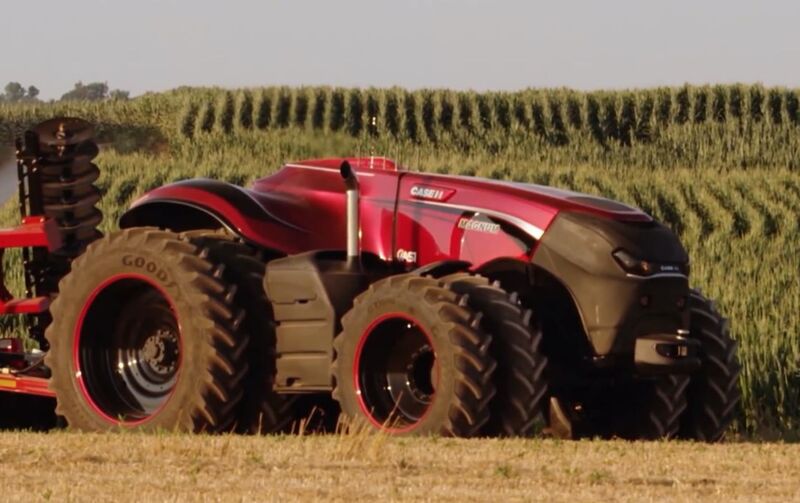
人工智能(AI)在农业机械中的应用在美国具有相对较短的历史,但正在快速增长。在农业中使用AI可以增加生产力、效率和可持续性,同时降低劳动成本。
一个早期的AI在农业机械中的例子是20世纪90年代开发的自动挤奶系统,用传感器和计算机视觉检测和挤奶奶牛,无需人为干预。
近年来,AI已越来越多地应用于其他农业机械,如拖拉机、联合收割机和无人机。例如,一些拖拉机制造商已开始使用AI根据土壤条件和其他数据来优化拖拉机操作。
同样,联合收割机和其他收获机械可以使用AI通过分析作物健康状况、土壤条件、天气模式和其他因素来优化作物产量和质量。
装备有传感器和AI的无人机也可以用于精确农业,如监测作物健康和生长、识别和治疗疾病或害虫、以及优化灌溉和施肥。
总的来说,AI在农业机械中的应用仍处于早期阶段,但它有可能彻底改变农业,帮助农民提高生产力和效率,同时减少他们的环境影响。
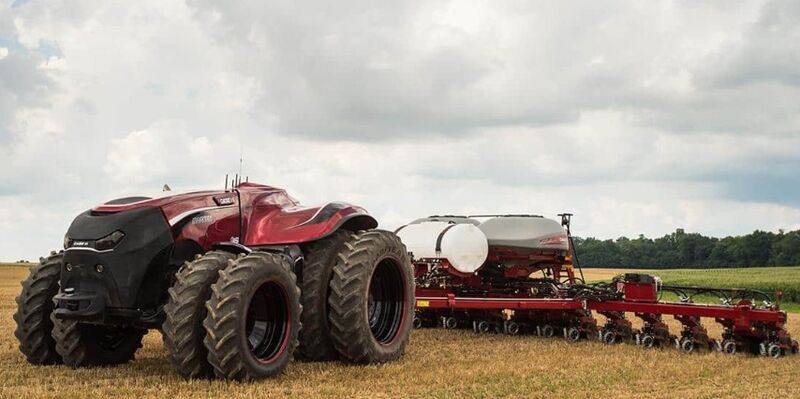
The development of artificial intelligence (AI) in agricultural machinery is rapidly advancing, and there are many exciting developments happening in this field. Some of the current areas of development include:
Precision agriculture: One of the most promising areas of development for AI in agriculture is precision agriculture. AI-powered sensors and drones are being used to monitor crop health, detect pests and diseases, and optimize water and fertilizer usage. This allows farmers to make more informed decisions about how to manage their crops, which can lead to higher yields and better sustainability.
Autonomous vehicles: Autonomous vehicles, including tractors and combines, are being developed with AI to enable them to operate independently, without human intervention. These vehicles use sensors, cameras, and other technologies to navigate fields and perform tasks such as planting, harvesting, and fertilizing.
Robotics: AI-powered robots are being developed to perform a range of agricultural tasks, from weeding and pruning to picking and packing crops. These robots can operate around the clock, with greater accuracy and efficiency than human labor, and can help to reduce labor costs for farmers.
Data analytics: AI is being used to analyze vast amounts of data generated by agricultural machinery, such as yield data, weather patterns, and soil conditions. This data can be used to optimize farming practices and make more informed decisions about crop management.
Overall, the development of AI in agricultural machinery is advancing rapidly, and there is great potential for these technologies to transform the agricultural industry in the United States and around the world.
人工智能(AI)在农业机械领域的发展正在快速推进,这个领域中有许多令人兴奋的发展正在发生。当前的一些发展领域包括:
精准农业:AI驱动的传感器和无人机被用于监测作物健康、检测害虫和疾病、以及优化水肥使用等。这使得农民可以更明智地决策如何管理作物,这可能导致更高的产量和更好的可持续性。
自动驾驶车辆:自动驾驶车辆,包括拖拉机和联合收割机,正在开发中,使用AI使它们能够独立操作,无需人为干预。这些车辆使用传感器、摄像头和其他技术来导航田地,并执行种植、收割和施肥等任务。
机器人技术:正在开发使用AI驱动的机器人,用于执行各种农业任务,从除草和修剪到采摘和包装作物。这些机器人可以全天候运作,比人工更准确、更高效,并有助于减少农民的劳动成本。
数据分析:AI被用于分析农业机械生成的大量数据,如产量数据、天气模式和土壤条件等。这些数据可以用于优化农业实践,并在作物管理方面做出更明智的决策。
总的来说,人工智能在农业机械领域的发展正在快速推进,这些技术有巨大的潜力,可以在美国和全球范围内改变农业产业。
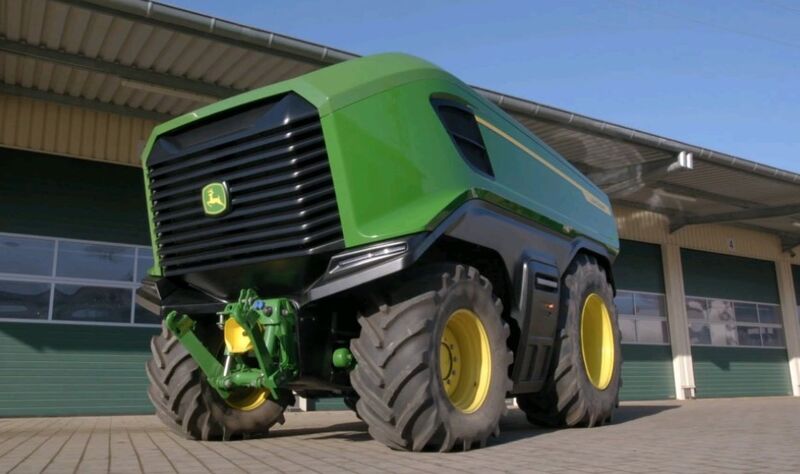
While the development of artificial intelligence (AI) in agricultural machinery is rapidly advancing, there are still several challenges that need to be overcome to fully realize the potential of these technologies. Some of the main difficulties include:
Data quality and access: AI requires large amounts of high-quality data to be effective. However, many farmers may not have access to the necessary data or may have data that is incomplete or of poor quality. This can limit the effectiveness of AI-powered agricultural machinery.
Adoption and training: Many farmers may be reluctant to adopt new technologies, particularly if they are unfamiliar with them or if they require significant training. This can limit the adoption of AI-powered agricultural machinery, even if it has the potential to improve efficiency and productivity.
Cost: AI-powered agricultural machinery can be expensive, particularly for small farmers who may not have the resources to invest in these technologies. This can limit the adoption of these technologies and prevent smaller farmers from benefiting from the efficiencies and productivity gains they offer.
Regulatory hurdles: There may be regulatory hurdles to the adoption of AI-powered agricultural machinery, particularly around issues such as privacy and data security. This can slow down the development and adoption of these technologies.
Technical challenges: Developing effective AI-powered agricultural machinery requires significant technical expertise in areas such as machine learning, computer vision, and robotics. There is a shortage of skilled workers in these areas, which can limit the pace of development of these technologies.
Overall, while the development of AI-powered agricultural machinery is advancing rapidly, there are several challenges that need to be overcome to ensure that these technologies can be effectively deployed to improve agricultural productivity and sustainability.
尽管农业机械中的人工智能(AI)的发展正在快速推进,但要完全实现这些技术的潜力仍面临着几个挑战。其中一些主要困难包括:
数据质量和获取:AI需要大量高质量的数据才能发挥作用。然而,许多农民可能无法获取所需数据,或者可能具有不完整或低质量的数据。这可能会限制AI驱动的农业机械的有效性。
采纳和培训:许多农民可能不愿采用新技术,尤其是如果他们不熟悉这些技术或者如果它们需要大量培训。即使AI驱动的农业机械有提高效率和生产率的潜力,这也可能会限制它们的采用。
成本:AI驱动的农业机械可能非常昂贵,尤其是对于可能没有资源投资这些技术的小农民。这可能会限制这些技术的采用,并阻止较小的农民从其提供的效率和生产力收益中受益。
监管障碍:可能会存在AI驱动的农业机械采纳方面的监管障碍,特别是围绕隐私和数据安全等问题。这可能会减缓这些技术的发展和采用。
技术挑战:开发有效的AI驱动的农业机械需要在机器学习、计算机视觉和机器人技术等领域具有重大的技术专业知识。这些领域的技术工人短缺,这可能会限制这些技术的发展速度。
总的来说,虽然AI驱动的农业机械的发展正在快速推进,但仍需要克服一些挑战,以确保这些技术能够有效地部署,从而提高农业生产率和可持续性。
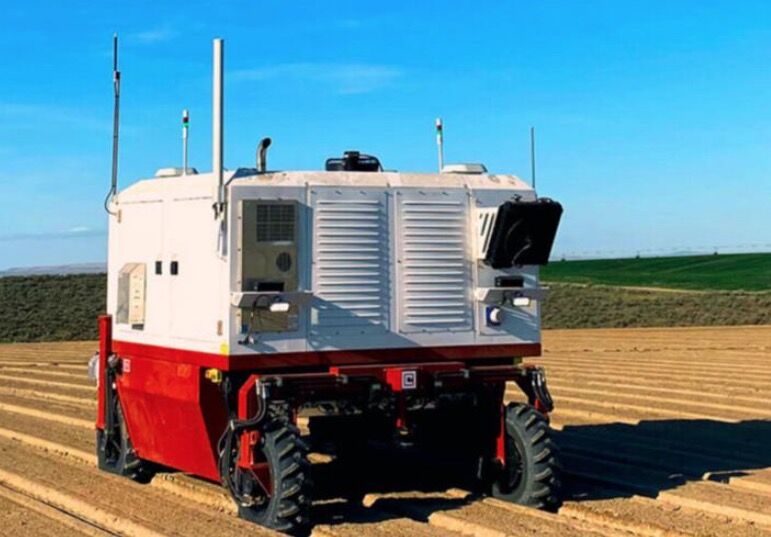
The future development direction for artificial intelligence (AI) in agricultural machinery is likely to be focused on improving efficiency, sustainability, and resilience. Some of the key areas of development include:
Data-driven decision making: AI will continue to be used to collect and analyze vast amounts of data generated by agricultural machinery, such as yield data, weather patterns, and soil conditions. This data can be used to optimize farming practices and make more informed decisions about crop management.
Autonomous machinery: Autonomous machinery, such as tractors and combines, will continue to be developed with AI to enable them to operate independently, without human intervention. This will allow farmers to save time and money while improving efficiency and productivity.
Precision agriculture: Precision agriculture will continue to be a major focus of development for AI in agricultural machinery. AI-powered sensors and drones will continue to be used to monitor crop health, detect pests and diseases, and optimize water and fertilizer usage.
Robotics: Robotics will continue to be developed with AI to perform a range of agricultural tasks, from weeding and pruning to picking and packing crops. This will help to reduce labor costs for farmers and increase productivity.
Sustainable agriculture: AI will be increasingly used to help farmers adopt sustainable farming practices, such as reducing pesticide and fertilizer use, improving soil health, and managing water resources more efficiently.
Overall, the future development direction for AI in agricultural machinery is likely to be focused on improving efficiency, sustainability, and resilience, helping farmers to produce more food with fewer resources while reducing the environmental impact of farming.
未来,人工智能(AI)在农业机械领域的发展方向可能集中在提高效率、可持续性和韧性方面。一些主要的发展方向包括:
数据驱动的决策:AI将继续用于收集和分析由农业机械产生的大量数据,如产量数据、天气模式和土壤条件。这些数据可以用于优化农业生产实践,做出更明智的决策,提高农作物的管理水平。
自动化机械:自动化机械,如拖拉机和联合收割机,将继续与AI一起开发,使它们能够独立运行,无需人工干预。这将允许农民节省时间和金钱,同时提高效率和生产率。
精准农业:精准农业将继续是农业机械中AI的主要发展方向。AI驱动的传感器和无人机将继续用于监测作物健康状况、检测害虫和疾病,以及优化用水和施肥等。这将使农民更明智地管理作物,提高作物产量和可持续性。
机器人技术:机器人技术将继续与AI一起开发,执行一系列农业任务,从除草和修剪到采摘和包装作物。这将有助于降低农民的劳动成本,并提高生产力。
可持续农业:AI将越来越多地用于帮助农民采用可持续的农业生产实践,如减少农药和化肥的使用、改善土壤健康状况以及更有效地管理水资源。
总之,未来AI在农业机械领域的发展方向可能集中在提高效率、可持续性和韧性方面,帮助农民以更少的资源生产更多的粮食,同时降低农业生产对环境的影响。
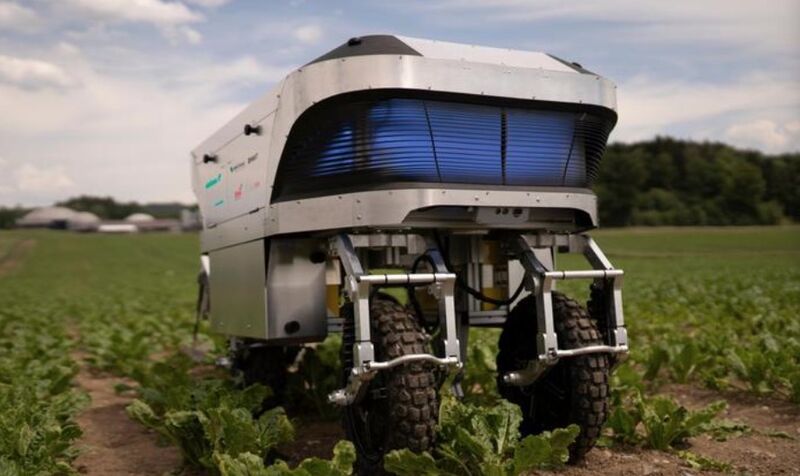
美国农业生产类型是什么,具体的 ♂
美国农业生产类型是什么,具体的美国农业是以大型机械作业的,而我国目前为止大多是以人本身去作业的;美国的农场都很大,每个农场主相隔也很远,且交通便利,每个农场都有公路、铁路相连,运输粮食时非常方便,且运输量大!虽说我国是一个农业大国,但相比之下,我国的农业很多都是零零散散,没有一个统一的类型,且种的人也是种小小的一点,不能统一的收购、出售!这些都制约了我国农业的发展!
美国农业的三大特征? ♂
美国农业的三大特征?美国农业的三大特点:1.农业地区专门化;2.农业生产专门化;3.美国农业属现代农业,生产过程具有高度的机械化、电气化、化学化和良种化。
农机机械在未来会有什么前景?
我国农业机械中,大田作物的种植机械门类比较齐全。小麦、水稻和玉米等主要作物、主要作业的生产机械化程度比较高。其他作物种植和收获的机械化程度差距较大。国外跨国农机企业,迪尔、凯斯纽荷兰、爱科、科乐收和久保田等悉数来到中国,他们的高端产品占据了我国的少数高端用户。国内农机企业如中国一拖、雷沃重工、东风农机、中联重工、五征和时风等,以生产中低端产品为主,目前占据的市场份额较大。我国目前仍然以机械传动系统为主,机电液一体化的动力换挡和自动挡技术,即重型拖拉机技术刚刚起步。而国际先进水平,重型农机技术已经普及,正向智能技术发展。
随着国家建设新农村的号召出台了很多相关政策鼓励农村经济发展。目前国内也意识到了农产品的单位产量和欧美国家之间的巨大差异。作为一个传统农业大国,我们也在想方设法弥补当前的巨大鸿沟。农业用地的流转承包政策有利于将南方地区成点块状分布的农业用地集中起来发展集约型农业。因此在这个背景下,农业机械的前景非常广阔。其实像日本,是他们的农业用地状况和我国南方地区非常相似。因此可以借鉴日本模式,开发小型农机,建设与之相关的融资租赁使用服务和维修平台。
农业的发展历史很像工业的发展历史,从传统的手工、半自动化,自动化、人工智能...以前,以以往农村劳动力剩余时,人工费用不高,农场主会提供大量的劳动岗位,劳动力短缺的问题还不是问题。建议致力发展农业机械的朋友多到田间地头调查,小型机械更加适合广大的农村,需求量也是巨大的。人口老龄化不仅仅是城市,农村同样面临这个问题,以机械替代人工,将是历史的潮流。
广告咨询:18215288822 采购热线:18215288822
声明:农机大全所有(图文、音视频)均由用户自行上传分享,仅供网友学习交流,版权归原作者。若您的权利被侵害,请联系 56325386@qq.com 删除。
载注明出处:http://nongjidaquan.com/news/274541.html
